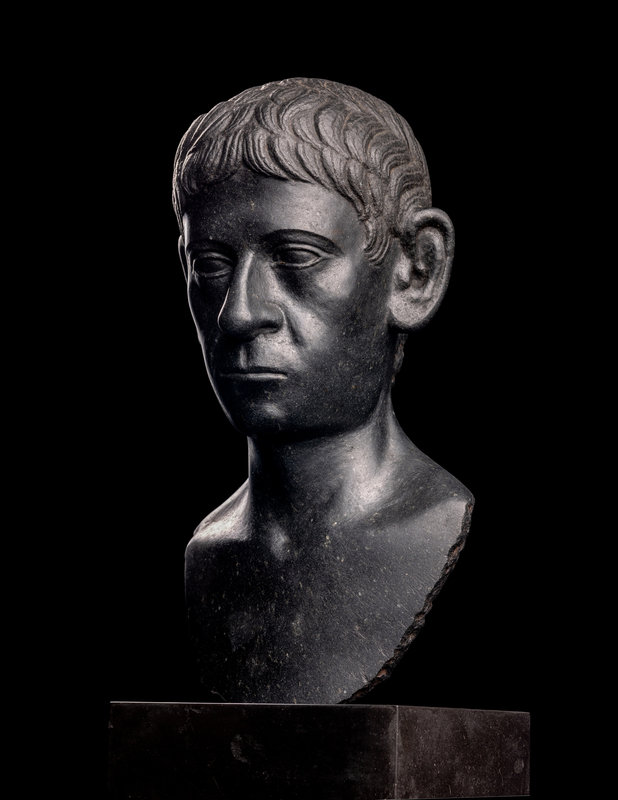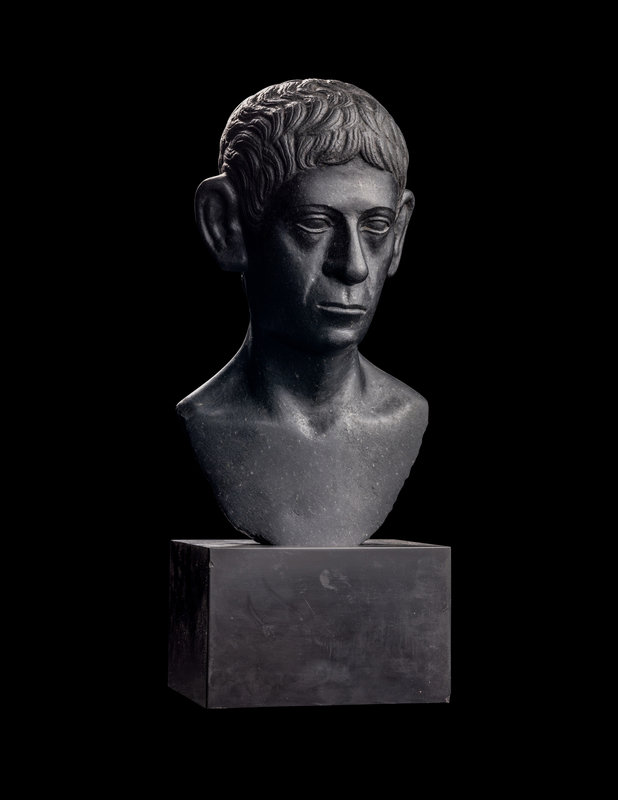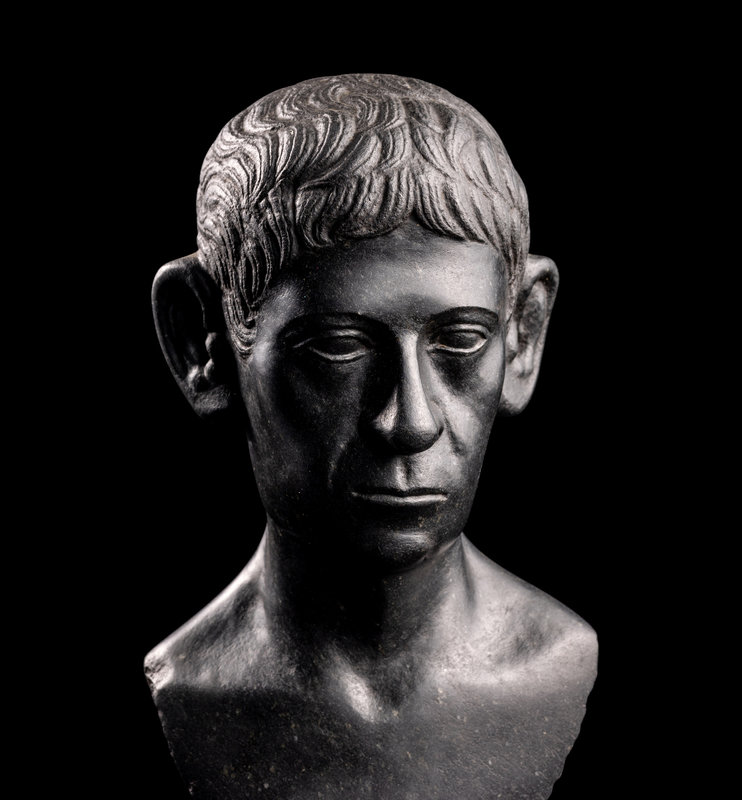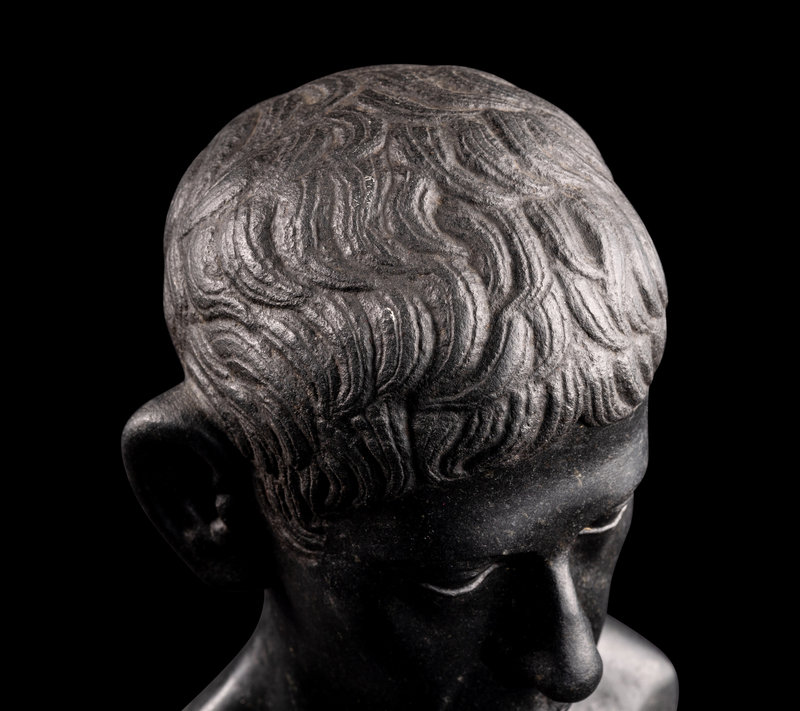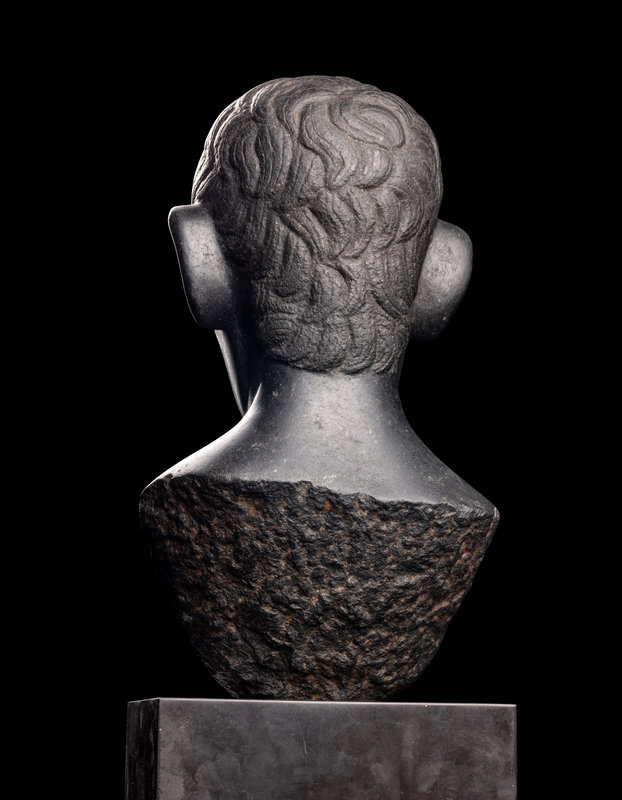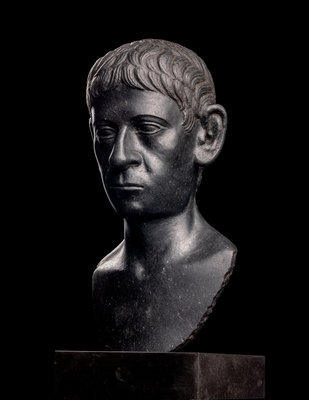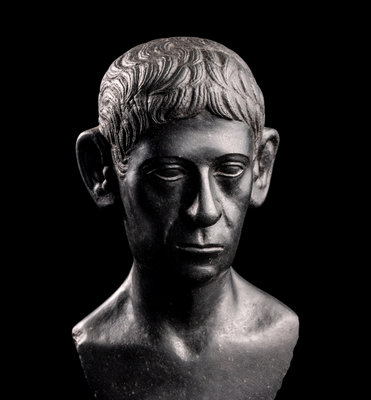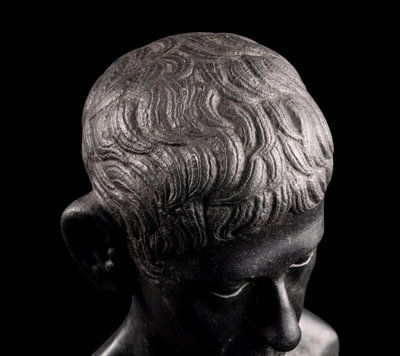Lot 9
Provenance:
Sotheby's, London, Egyptian, Greek, and Roman Antiquities, 24 May 1921, Lot 290.
Ernest Brummer (1891-1964), Paris & New York, acquired from the above.
Ella Bache Brummer, New York, 1964-1999; thence by descent to her nephew, Dr. John Laszlo, Atlanta, Georgia.
Exhibited:
New York, Brooklyn, Brooklyn Museum, Pagan and Christian Egypt, 23 January-9 March 1941.
New York, Brooklyn, Brooklyn Museum, 5-29 November 1972 (TL72.150.1).
Published:
J. Cooney, Pagan and Christian Egypt, Brooklyn Museum, 1941, p. 19, no. 20.
For The Brummer Gallery Records at The Metropolitan Museum Cloisters Library and Archive, see Object Inventory Card Number: P90 [https://libmma.contentdm.oclc.org/digital/collection/p16028coll9/id/62259/rec/1]
Shown with a slightly downcast gaze and with his head turned somewhat to our right, this portrait bust shows a man (identity unknown) in a striking and unusual material. The thin lips are bordered by strongly marked nasolabial creases, a prominent nose, and almond-shaped eyes marked by sharply delineated eyelids and surmounted by slim brows. The hair is arrayed in tiers of comma-shaped locks parted over the brow, worked more energetically in the front and with less attention at the rear. This beardless man, published as early as 1921, belongs to a small group of Romano-Egyptian portraits (two perhaps representing Marc Antony) in dark, hard stone thought to have been produced by an Alexandrian school in the waning years of Ptolemaic rule and into the first century of Roman dominion in Egypt.
Considerably harder material than marble, carved black basalt imparts a stronger toreutic aspect to its subject. Such is the case here, particularly with the low polish used on the face and bust. The material also accounts for some oddities in proportion. For instance, the over-large ears on the present head that are left partially unfinished in the rear seem especially vulnerable to catastrophic breakage in other examples wrought in such material, and retaining volume there might have been a prudent measure against damage both during and after the carving process. As extensive existing correspondence suggests, this bust was much admired by both John D. Cooney and Bernard V. Bothmer–both pre-eminent scholars of Egyptian antiquity at the Brooklyn Museum–when in the Brummer collection. It was included with Mr. Brummer’s permission in Cooney’s landmark 1941 exhibition Pagan and Christian Egypt and published with great enthusiasm in the exhibition catalogue. Some thirty years later, at Dr. Bothmer’s behest, it was exhibited there once again in November of 1972 with the permission of Mrs. Brummer.
For a comparison of an unfinished black basalt head in the British Museum, see A.H. Smith, A Catalogue of Sculpture in the Department of Greek and Roman Antiquities in the British Museum, Vol. III, London 1904, no. 1871. Also, see the green basalt bust (of similar polish and bust type) perhaps of Mark Antony, S. Walker and P. Higgs (eds.), Cleopatra of Egypt: from History to Myth (exhibition catalogue), London, 2001, no. 261.
